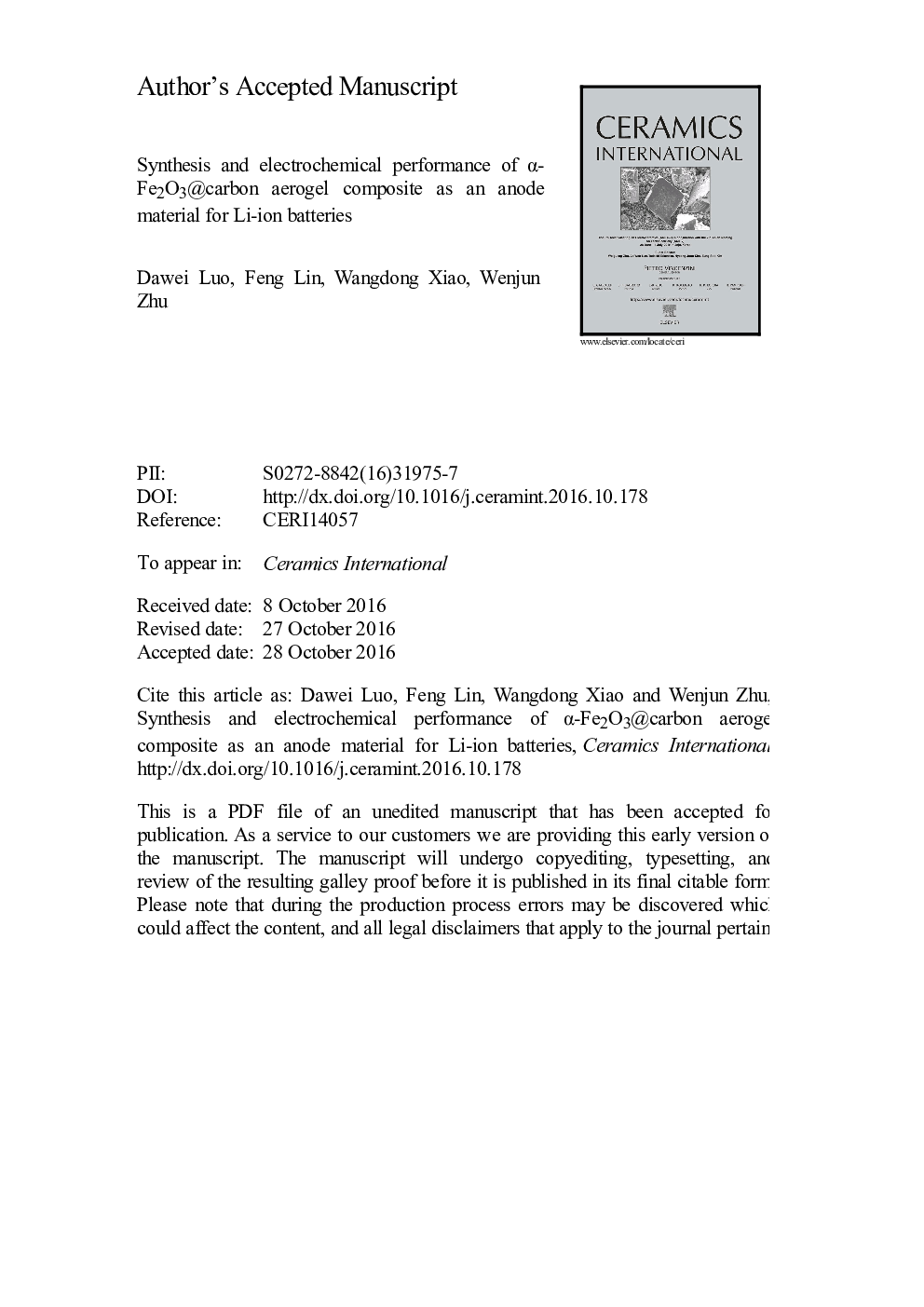| Article ID | Journal | Published Year | Pages | File Type |
|---|---|---|---|---|
| 5438261 | Ceramics International | 2017 | 13 Pages |
Abstract
A α-Fe2O3@carbon aerogel (CA) composite material has been successfully synthesized via a simple hydrothermal method in water solution. The microstructure, morphologies, α-Fe2O3 loading content in α-Fe2O3@CA, porous nanostructure and electrochemical properties of these materials are investigated by X-ray diffraction, scanning electron microscopy, thermal gravimetric analysis, N2 adsorption-desorption isotherms, constant current charge/discharge tests and cyclic voltammetry tests. The results show that α-Fe2O3 is uniformly dispersed on CA with a rugby-like morphology, and the α-Fe2O3 active material loading content in α-Fe2O3@CA composite is up to 95.72%. The α-Fe2O3@CA revealed a high reversible capacity of 581.9 mAh gâ1 and stable cyclic retention at 50th cycle. The improvement of reversible capacity and cyclic performance of the α-Fe2O3@CA composite is attributed to the unique structure of CA, with high electronic conductivity and three-dimensional porous structures among the interconnected α-Fe2O3@CA composite, which could not only effectively load the α-Fe2O3 active material, but also could prevent the aggregation of α-Fe2O3 nanoparticles and facilitate the transport of electrons and shorten the distance for Li+ diffusion. The encouraging experimental results suggest that the novel α-Fe2O3@CA composite have great potential for use as an anode material for lithium rechargeable cells.
Related Topics
Physical Sciences and Engineering
Materials Science
Ceramics and Composites
Authors
Dawei Luo, Feng Lin, Wangdong Xiao, Wenjun Zhu,
